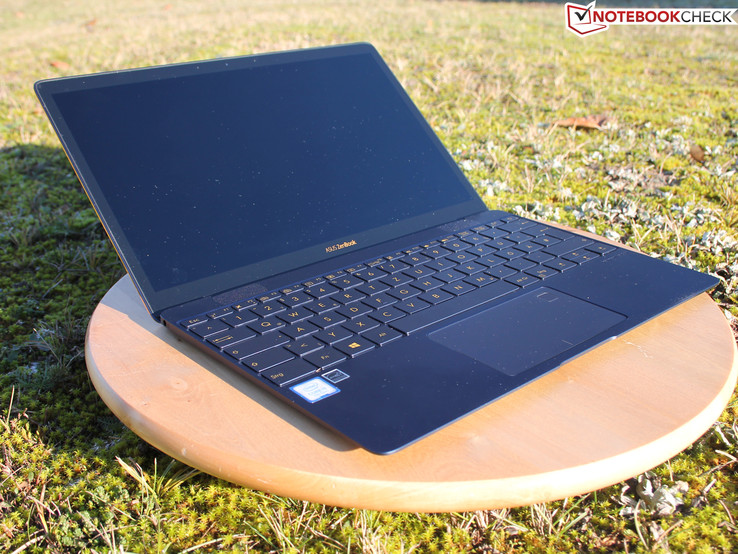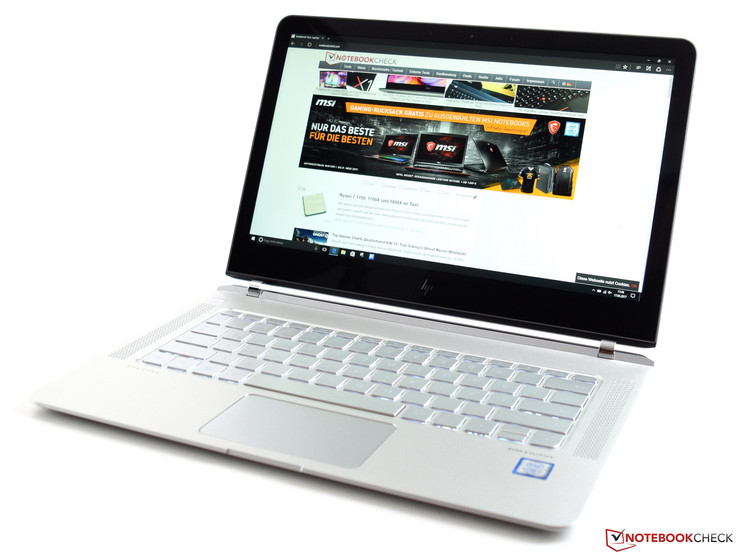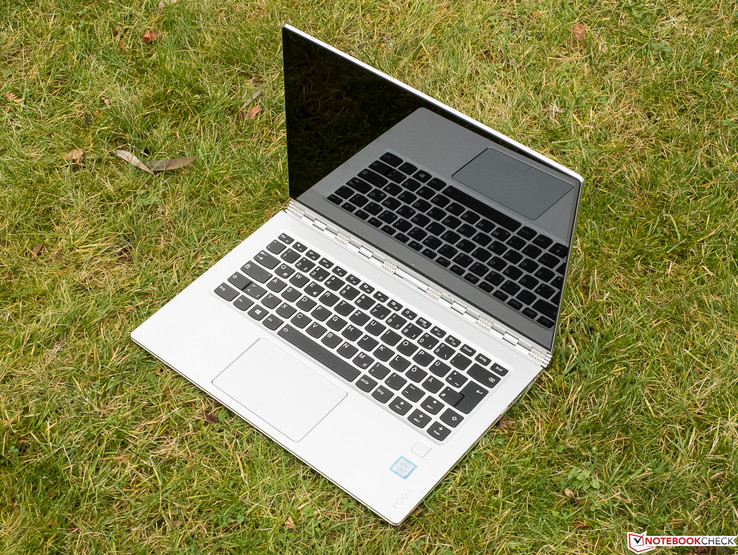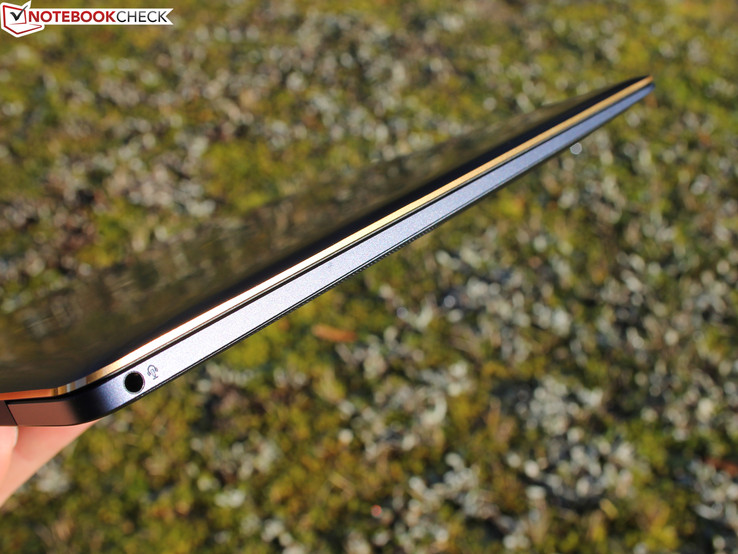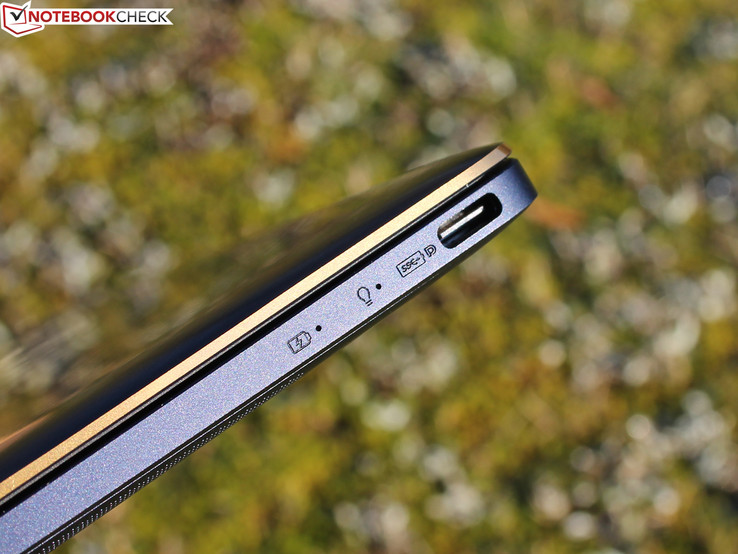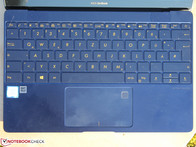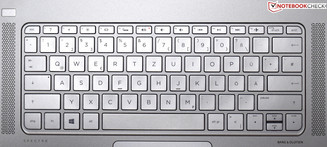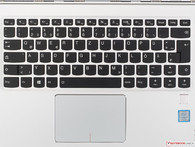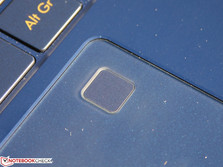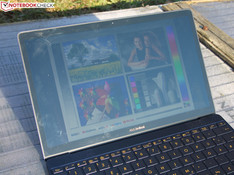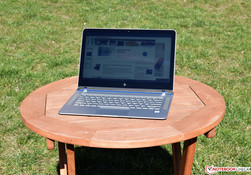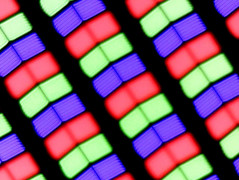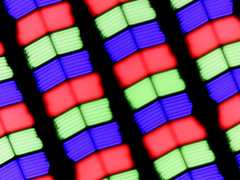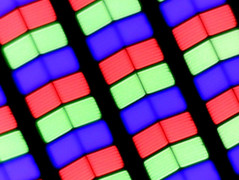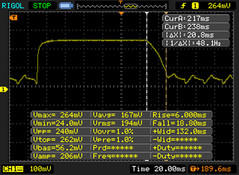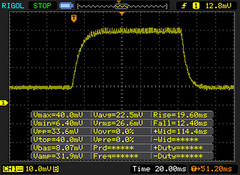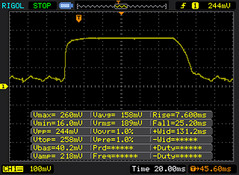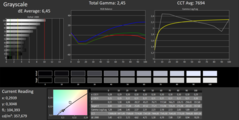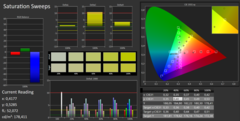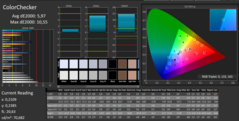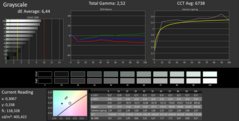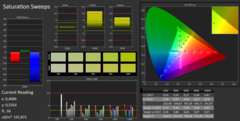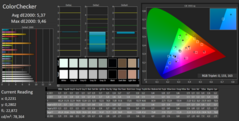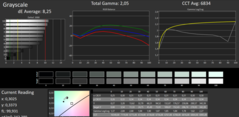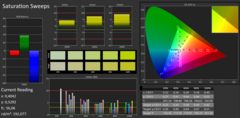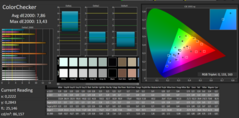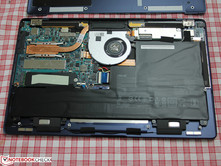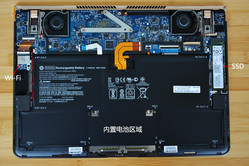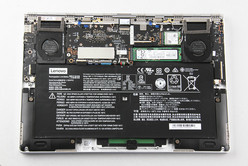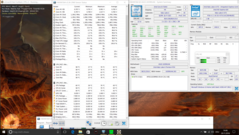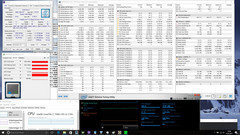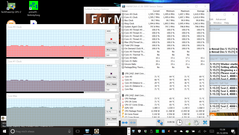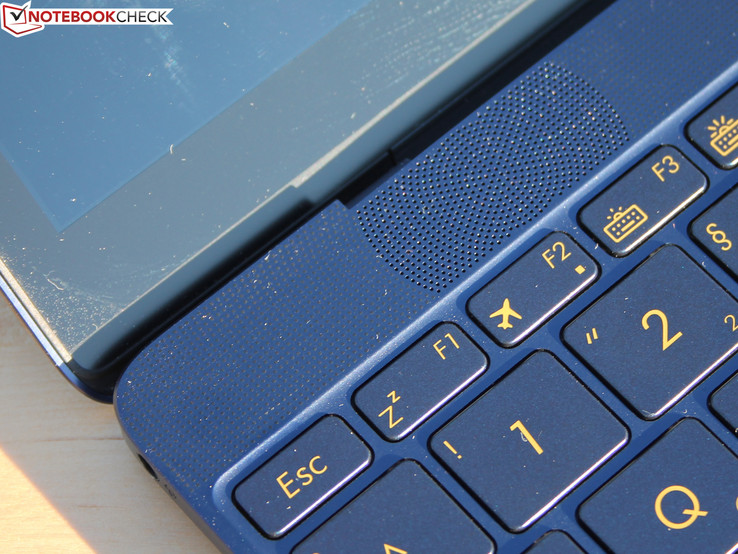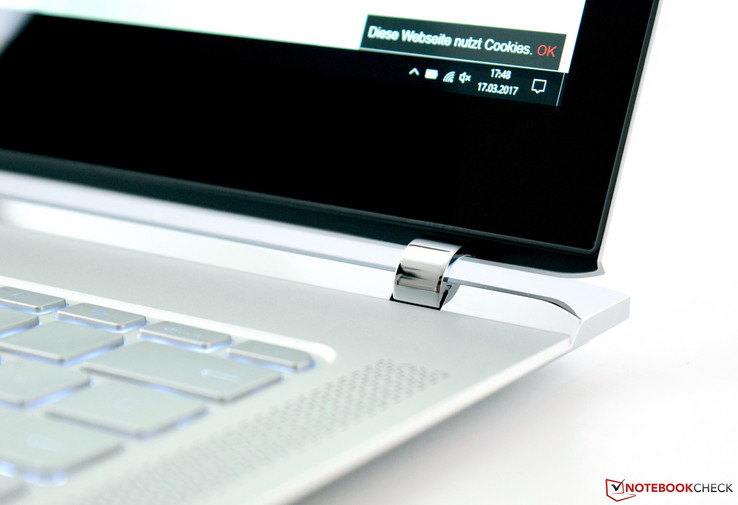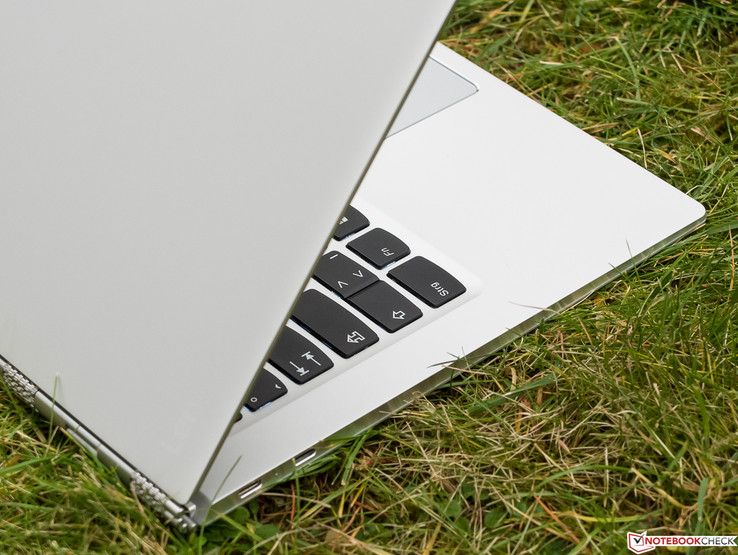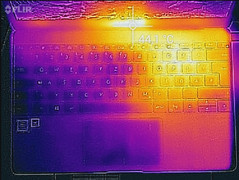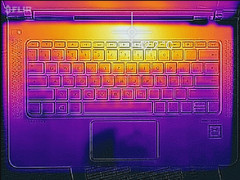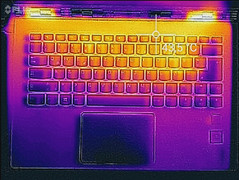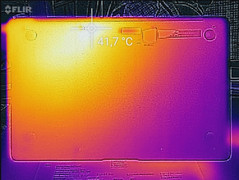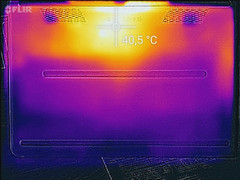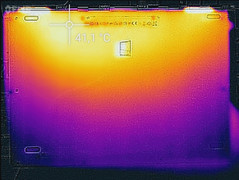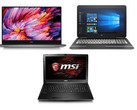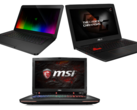Face Off: Super Thin Ultrabooks at a Cost

The $1000 USD price range seems to be the sweet spot for most flagship Ultrabooks. Finding the best value in such a category where "less is more", however, is an intricate balancing act. Manufacturers can only cut so much from a notebook before users would rather have some features put back in even if it means some added weight and thickness.
For this Face Off, we want to compare the smallest Ultrabook available (Asus Zenbook 3) with one of the thinnest (HP Spectre 13) and one of the most versatile (Lenovo Yoga 910) currently available in the consumer space. Each of these models can be found for slightly less than $1000 USD depending on the SKU with unique pros and cons in each category that we will detail here.
We encourage users to check out our dedicated review pages below for more data and detailed analyses of each of the three models. This comparison is by no means a replacement, but a condensed aid for those on the fence.
Case
Visually, each of these flagship notebooks have unique sets of features that are not available on the others. The super-light aluminum-magnesium alloy of the Zenbook 3, piston hinges of the Spectre 13, and wristband hinge of the Yoga 910 all stand out from the crowd. In terms of rigidity and build quality, we can notice no major flaws on our particular test units or even major differences between them. The bases and lids of all these notebooks will still exhibit more warping compared to something thicker like the Razer Blade 14 when subjected to enough pressure. This is the price to pay when the designs are as thin as they are here, but it's still a testament to Asus as we don't find the Zenbook 3 to be significantly more flexible or weaker than the Yoga 910 despite the size differences between the two.
The illustration below shows how much smaller and lighter the Asus notebook is when compared to the Spectre 13 and Yoga 910. Its diminutive build and narrow bezels make it several hundred grams lighter than both of its competitors. The 13.3-inch HP is ever so slightly thinner, but its footprint is quite large in return. In fact, its thicker bezels contribute to the overall larger length and width when compared to the 13.9-inch Yoga 910. This makes the Spectre 13 appear "fat" in two dimensions even though it is technically one of the thinnest Windows notebooks available.
Connectivity
Integrated ports are limited as expected. Luckily, the USB Type-C ports on each of these systems are multi-functional and can be used for both charging and video-out via DisplayPort.
The HP and Lenovo have distinct advantages over the Zenbook 3 with support for Thunderbolt 3 and a full-size USB Type-A port, respectively. To alleviate this, Asus includes a free external USB Type-C dock with additional ports including HDMI and USB Type-A. If more advanced docking stations and external 4K displays are of higher priority, however, then the Spectre 13 is the only solution because of its rare dual Thunderbolt 3 ports.
| Asus Zenbook 3 | HP Spectre 13 | Lenovo Yoga 910 | |
| USB | 1x USB Type-C Gen. 1 | 1x USB Type-C Gen. 1, 2x USB Type-C Gen. 2 + Thunderbolt 3 | 1x USB 2.0, 2x USB Type-C Gen. 1 |
| Video-out | USB Type-C Gen. 1 | 2x USB Type-C Gen. 2 + Thunderbolt 3 | 1x USB Type-C Gen. 1 |
| Audio | 3.5 mm combo | 3.5 mm combo | 3.5 mm combo |
| Storage Bays | 1x M.2 2280 | 1x M.2 2280 | 1x M.2 2280 |
Input Devices
The Zenbook 3 keyboard takes advantage of nearly the entire width of the notebook in order to compensate for the small 12.5-inch screen size. The result is a keyboard that feels surprisingly roomy given its limited size. The main issue then becomes the shallow key travel of just 0.8 mm which makes typing feel more like tapping a flat table rather than individual keys. The somewhat soft feedback also does the keyboard no favors, so it will definitely take some time to become accustomed to the feel of the keys.
The keyboards on the Spectre 13 and Yoga 910 offer deeper travel than on the Asus and feel more natural as a result. We find the Lenovo keys to be slightly softer than the HP, so the HP has a better chance of satisfying typists than either of its two competitors. The Arrow keys are still superior on the Lenovo since these are halved in size on the Asus and HP.
Meanwhile, the clickpad experience is poorer on the Asus. The extremely thin chassis once again leaves little room for travel and the integrated mouse clicks are very shallow as a result. The problem is further compounded by the relatively soft feedback that makes it more difficult to feel when an input is successfully registered. The HP and Lenovo clickpads are noticeably firmer and louder when pressed.
Display
The glossy panels are quite similar between the three notebooks even down to the subpixel level. In particular, the Zenbook 3 and Yoga 910 utilize panels sourced from the same vendor and subsequently have more in common with each other despite the differences in native resolution. Core features like color coverage and contrast levels are nearly identical across the board for the three systems, but users who want the brighter display should consider the HP over the rest. It's disappointing that the Yoga 910 is sporting the dimmer backlight since its 360-degree hinges are more likely to encourage outdoor use where a brighter backlight would have done wonders. In this case, users will be sacrificing a brighter display in favor of its larger screen size and higher native resolution.
Display response times are slower on the HP and so Spectre 13 users are more likely to notice ghosting. Users sensitive to onscreen flickering and eyestrain may want to avoid using the Asus notebook on very low brightness settings since PWM can be detected on these levels.
| Asus Zenbook 3 | HP Spectre 13 | Lenovo Yoga 910 | |
| Display Size | 12.5-inch | 13.3-inch | 13.9-inch |
| Native Resolution | 1920 x 1080 | 1920 x 1080 | 3840 x 2160 |
| Pixel Density | 176 PPI | 166 PPI | 317 PPI |
| Panel ID | AU Optronics AUO306D / B125HAN03.0 | Chi Mei CMN1374LQ156M1 | AU Optronics AUO323D / B139HAN03.2 |
| Asus Zenbook 3 UX390UA-GS041T | HP Spectre 13-v131ng | Lenovo Yoga 910-13IKB-80VF004CGE | |
|---|---|---|---|
| Display | |||
| Display P3 Coverage (%) | 64.7 | 64.6 | 62.2 |
| sRGB Coverage (%) | 89.6 | 88.8 | 90.1 |
| AdobeRGB 1998 Coverage (%) | 65.4 | 64.8 | 63.5 |
| Response Times | |||
| Response Time Grey 50% / Grey 80% * (ms) | 30 ? | 46 ? | 46 ? |
| Response Time Black / White * (ms) | 26 ? | 33 ? | 24 ? |
| PWM Frequency (Hz) | 50 ? | ||
| Screen | |||
| Brightness middle (cd/m²) | 355 | 404 | 348 |
| Brightness (cd/m²) | 341 | 382 | 310 |
| Brightness Distribution (%) | 87 | 91 | 80 |
| Black Level * (cd/m²) | 0.3 | 0.35 | 0.25 |
| Contrast (:1) | 1183 | 1154 | 1392 |
| Colorchecker dE 2000 * | 5.97 | 5.37 | 7.86 |
| Colorchecker dE 2000 max. * | 10.55 | 9.46 | 13.43 |
| Greyscale dE 2000 * | 6.45 | 6.44 | 8.25 |
| Gamma | 2.45 90% | 2.52 87% | 2.05 107% |
| CCT | 7694 84% | 6738 96% | 6834 95% |
| Color Space (Percent of AdobeRGB 1998) (%) | 58 | 58 | 58 |
| Color Space (Percent of sRGB) (%) | 89 | 89 | 90 |
| Total Average (Program / Settings) |
* ... smaller is better
Performance
CPU Performance
While it's unsurprising to see the i5-7200U in the Zenbook 3 perform slower than the i7-7500U in the HP and Lenovo, the Lenovo system will consistently outperform the HP even though they both carry the same CPU. CineBench R15 Multi-Thread and 3DMark Cloud Gate Physics show the Lenovo CPU to be 10 to 15 percent faster than the HP.
See our dedicated pages on the Core i5-7200U and i7-7500U for more benchmarks and comparisons. Zenbook 3 SKUs sporting the i7-7500U are available as well, but our data on this page reflect only the SKU with the i5-7200U CPU.
| Asus Zenbook 3 | HP Spectre 13 | Lenovo Yoga 910 | |
| CPU | 2.5 GHz Core i5-7200U | 2.7 GHz Core i7-7500U | 2.7 GHz Core i7-7500U |
| CPU TDP | 15 W | 15 W | 15 W |
| GPU | HD Graphics 620 | HD Graphics 620 | HD Graphics 620 |
| RAM | 8 GB LPDDR3 2133 MHz, Dual-Channel, soldered | 8 GB LPDDR3-1866, Dual-Channel, soldered | 16 GB DDR4 2133 MHz, Dual-Channel, soldered |
| Cinebench R15 | |
| CPU Single 64Bit (sort by value) | |
| Asus Zenbook 3 UX390UA-GS041T | |
| HP Spectre 13-v131ng | |
| Lenovo Yoga 910-13IKB-80VF004CGE | |
| CPU Multi 64Bit (sort by value) | |
| Asus Zenbook 3 UX390UA-GS041T | |
| HP Spectre 13-v131ng | |
| Lenovo Yoga 910-13IKB-80VF004CGE | |
| Cinebench R11.5 | |
| CPU Single 64Bit (sort by value) | |
| HP Spectre 13-v131ng | |
| CPU Multi 64Bit (sort by value) | |
| HP Spectre 13-v131ng | |
| Cinebench R10 | |
| Rendering Single CPUs 64Bit (sort by value) | |
| HP Spectre 13-v131ng | |
| Rendering Multiple CPUs 64Bit (sort by value) | |
| HP Spectre 13-v131ng | |
| 3DMark | |
| 1280x720 offscreen Ice Storm Unlimited Physics (sort by value) | |
| HP Spectre 13-v131ng | |
| 1920x1080 Ice Storm Extreme Physics (sort by value) | |
| HP Spectre 13-v131ng | |
| 1280x720 Cloud Gate Standard Physics (sort by value) | |
| Asus Zenbook 3 UX390UA-GS041T | |
| HP Spectre 13-v131ng | |
| Lenovo Yoga 910-13IKB-80VF004CGE | |
| 1920x1080 Fire Strike Physics (sort by value) | |
| HP Spectre 13-v131ng | |
| Lenovo Yoga 910-13IKB-80VF004CGE | |
| Fire Strike Extreme Physics (sort by value) | |
| HP Spectre 13-v131ng | |
| 1280x720 Ice Storm Standard Physics (sort by value) | |
| HP Spectre 13-v131ng | |
| PCMark 8 | |
| Work Score Accelerated v2 (sort by value) | |
| Asus Zenbook 3 UX390UA-GS041T | |
| HP Spectre 13-v131ng | |
| Creative Score Accelerated v2 (sort by value) | |
| HP Spectre 13-v131ng | |
| Home Score Accelerated v2 (sort by value) | |
| Asus Zenbook 3 UX390UA-GS041T | |
| HP Spectre 13-v131ng | |
| Lenovo Yoga 910-13IKB-80VF004CGE | |
GPU Performance
The Lenovo system once again comes out consistently ahead of the Spectre 13 in 3DMark benchmarks despite carrying the same integrated GPU. The difference, however, is only a few frames per second in games. Nonetheless, users who want every ounce of graphical power may prefer the Yoga 910 over the Spectre 13. The slower RAM of the HP may also be a key factor in its slightly lower-than-expected performance in games.
See our dedicated page on the HD Graphics 620 GPU for more technical information and benchmarks.
| 3DMark | |
| 1920x1080 Fire Strike Combined | |
| Lenovo Yoga 910-13IKB-80VF004CGE | |
| HP Spectre 13-v131ng | |
| 1920x1080 Fire Strike Physics | |
| Lenovo Yoga 910-13IKB-80VF004CGE | |
| HP Spectre 13-v131ng | |
| 1920x1080 Fire Strike Graphics | |
| Lenovo Yoga 910-13IKB-80VF004CGE | |
| HP Spectre 13-v131ng | |
| 1920x1080 Fire Strike Score | |
| Lenovo Yoga 910-13IKB-80VF004CGE | |
| HP Spectre 13-v131ng | |
| 1280x720 Cloud Gate Standard Physics | |
| Lenovo Yoga 910-13IKB-80VF004CGE | |
| HP Spectre 13-v131ng | |
| Asus Zenbook 3 UX390UA-GS041T | |
| 1280x720 Cloud Gate Standard Graphics | |
| Lenovo Yoga 910-13IKB-80VF004CGE | |
| Asus Zenbook 3 UX390UA-GS041T | |
| HP Spectre 13-v131ng | |
| 1280x720 Cloud Gate Standard Score | |
| Lenovo Yoga 910-13IKB-80VF004CGE | |
| HP Spectre 13-v131ng | |
| Asus Zenbook 3 UX390UA-GS041T | |
| 3DMark 11 | |
| 1280x720 Performance GPU | |
| Lenovo Yoga 910-13IKB-80VF004CGE | |
| HP Spectre 13-v131ng | |
| Asus Zenbook 3 UX390UA-GS041T | |
| 1280x720 Performance Physics | |
| Lenovo Yoga 910-13IKB-80VF004CGE | |
| HP Spectre 13-v131ng | |
| Asus Zenbook 3 UX390UA-GS041T | |
| 1280x720 Performance Combined | |
| Lenovo Yoga 910-13IKB-80VF004CGE | |
| Asus Zenbook 3 UX390UA-GS041T | |
| HP Spectre 13-v131ng | |
| Cinebench R15 - OpenGL 64Bit | |
| Lenovo Yoga 910-13IKB-80VF004CGE | |
| Asus Zenbook 3 UX390UA-GS041T | |
| HP Spectre 13-v131ng | |
| Rise of the Tomb Raider - 1024x768 Lowest Preset (sort by value) | |
| Asus Zenbook 3 UX390UA-GS041T | |
| HP Spectre 13-v131ng | |
| Lenovo Yoga 910-13IKB-80VF004CGE | |
Stress Test
We run both Prime95 and FurMark to simulate maximum stress and to test system stability. These unrealistic conditions do not represent daily workloads and are instead meant to put both the CPU and GPU at 100 percent capacity.
As is common on most Ultrabooks with U-class processors, each of these three notebooks will throttle their respective CPUs when subjected to extreme stress. Notably, the HP system will throttle down to 1.4 GHz compared to 1.6 GHz on the Lenovo to explain how the Yoga 910 can consistently outperform the HP in the benchmarks above. The Zenbook 3 will run even slower at a steady 1.2 GHz, but its core temperature is significantly cooler at 60 C compared to 70+ C on its two competitors. We suspect that the Zenbook 3 SKU with the i7-7500U may run warmer and approach similar temperatures as the HP and Lenovo systems.
Our Yoga 910 review editor was unable to provide GPU clock rates when under extreme stress. Based on the GPU benchmarks above, however, it's safe to assume that its clock rates are equal to or higher than on the Spectre 13 since 3DMark scores are slightly ahead of the HP.
| Asus Zenbook 3 | HP Spectre 13 | Lenovo Yoga 910 | |
| Processor | Core i5-7200U | Core i7-7500U | Core i7-7500U |
| Rated GPU Core Clock (MHz) | 300+ | 300+ | 300+ |
| Stable GPU Core Clock on FurMark (MHz) | 698 | 850 | -- |
| Rated CPU Core Clock (GHz) | 2.5 | 2.7 | 2.7 |
| Stable CPU Core Clock on Prime95 (GHz) | 1.2 | 1.4 | 1.6 |
| Stable CPU temperature | 60 C | 71 C | 71 C |
Emissions and Energy
System Noise and Temperature
The notebooks are silent (or very near it) when idling on desktop. The fans in the Yoga 910, however, are more sensitive to onscreen loads as simply launching a browser window will audibly bump fan noise just slightly. Average processing load with 3DMark06 induces a steady fan noise in the 38 to 40 dB(A) range depending on the notebook, which is not uncommon for most Ultrabooks. Extreme loads will actually cause the Yoga 910 to run noticeably quieter because of performance throttling. It's worth noting that the Asus notebook utilizes only one system fan as opposed to two each on the HP and Lenovo, yet the system is not any louder than its competitors when under load.
Electronic noise (or coil whine) is only noticeable on our Spectre 13 test unit specifically whenever the internal SSD is being accessed.
Surface temperatures are yet again not significantly different between the three notebooks when under very high processing loads. Instead, the asymmetric cooling solution of the Asus stands out as its right half will warm up much more than the left half as shown by our thermal maps below. This is somewhat unfavorable during general use because one hand will likely be warmer than the other while typing.
| Asus Zenbook 3 UX390UA-GS041T | HP Spectre 13-v131ng | Lenovo Yoga 910-13IKB-80VF004CGE | |
|---|---|---|---|
| Noise | |||
| off / environment * (dB) | 30.7 | 30.4 | 31.7 |
| Idle Minimum * (dB) | 30.7 | 30.4 | 31.7 |
| Idle Average * (dB) | 30.7 | 30.4 | 31.7 |
| Idle Maximum * (dB) | 30.9 | 30.4 | 31.7 |
| Load Average * (dB) | 38.7 | 40 | 38.4 |
| Load Maximum * (dB) | 38.9 | 40 | 34.7 |
* ... smaller is better
Power Consumption
Power consumption between the notebooks are nearly identical when under very low idling loads despite the differences in screen size and resolution. This continues up to average loads represented by 3DMark06 where users can expect a power draw in the 28 W to 32 W range depending on the notebook. Consumption drops for the Asus and Lenovo when under extreme loads due to the their aforementioned throttling behavior and imposed temperature ceilings.
| Asus Zenbook 3 UX390UA-GS041T | HP Spectre 13-v131ng | Lenovo Yoga 910-13IKB-80VF004CGE | |
|---|---|---|---|
| Power Consumption | |||
| Idle Minimum * (Watt) | 3.3 | 3.6 | 4.3 |
| Idle Average * (Watt) | 6.2 | 6.4 | 6.3 |
| Idle Maximum * (Watt) | 10.4 | 9.2 | 9 |
| Load Average * (Watt) | 28 | 34 | 32.7 |
| Load Maximum * (Watt) | 25.7 | 34.4 | 28.8 |
* ... smaller is better
Battery Life
The Lenovo carries a 78 Wh internal battery pack, which is unusually large for its size class and essentially twice the capacity of the HP and Asus. Subsequently, runtimes are significantly longer on the Lenovo system by about four full hours compared to its two competitors when under similar WLAN conditions. This isn't to say that runtimes are poor on the Zenbook 3 or Spectre 13 as these systems can still last for around 6.5 hours each during real-world browsing scenarios, but they certainly pale in comparison to the 10+ hour-long battery life of the Yoga 910.
The battery packs are all integrated and non-removable between these systems.
| Asus Zenbook 3 UX390UA-GS041T 40 Wh | HP Spectre 13-v131ng 38 Wh | Lenovo Yoga 910-13IKB-80VF004CGE 78 Wh | |
|---|---|---|---|
| Battery runtime | |||
| Reader / Idle (h) | 14.1 | 12 | 17.8 |
| H.264 (h) | 6.4 | 6.1 | |
| WiFi v1.3 (h) | 6.6 | 6.6 | 10.7 |
| Load (h) | 1.8 | 1.3 | 2.9 |
Verdict
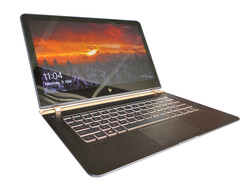
The expression "you win some, you lose some" couldn't apply more between these three systems. Aside from the obvious screen size differences, opting for one model will mean giving up specific features found on the others. Build quality and construction are fortunately not major concerns and so users can comfortably choose based on size and functionality.
The Zenbook 3 is super-light and still manages to be quite rigid, but its keyboard and trackpad leave a lot to be desired. The Spectre 13 is revered for its brighter display and multiple integrated Thunderbolt 3 ports, but its CPU is more susceptible to throttling and its thicker bezels make the system appear quite large. The longer-lasting Yoga 910 is more versatile on-the-go and offers a larger display than the HP in roughly the same size chassis, but it is heavier and with a dimmer display. In this case, we can't objectively crown one notebook to be better than the others.
| Asus Zenbook 3 UX390UA | HP Spectre 13 | Lenovo Yoga 910-13IKB |
|---|---|---|
+ significantly lighter and smaller; Only a single system fan + Free HDMI/Type-C/Type-A adapter + Easier serviceability + Lower core temperatures when under load (7200U SKU) | + Thinner + 3x USB Type-C ports, 2x Thunderbolt 3 + More comfortable keyboard and trackpad + Brighter display backlight | + 360-degree hinges; Tablet mode + USB Type-A, 2x USB Type-C + Larger trackpad + Smaller L x W than Spectre 13 despite the larger 13.9-inch UHD display + Slightly faster CPU and GPU performance than Spectre 13 + Very large internal battery; Significantly longer runtimes |
- Smaller 12.5-inch display - No Thunderbolt 3 or USB Type-A; Only one Type-C port available for both charging and accessories - Very shallow key travel; Weak trackpad feedback - PWM detected on low brightness levels - More uneven surface temperature development | - Large footprint considering the screen size - No USB Type-A - Slower display response times - Heavier CPU and GPU throttling - Slightly louder fan noise when under load - Smaller battery capacity; Shorter runtimes | - Heavier and thicker - No Thunderbolt 3 support - Dimmer display backlight; More inaccurate display out of the box - Wristband hinge could be stronger |


